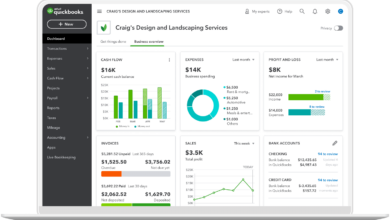What is the Mobile App Development and it’s Process?

Mobile application development has increased over the past many years. As a result, this area of software development specifically mentions apps that run on mobile devices. Mobile apps are developed for many operating systems, such as iOS and Android. Apps provide a better user experience than mobile web browsing because they take advantage of standard features on smartphones.
Of the world’s population, more than 78% have a smartphone. What are people doing with these devices, then? They make use of apps.
These programs might be broken down into other categories, including games, music, calendars, communication, etc. Of course, you’re already undoubtedly familiar with some of the most well-known programs in the world, like Facebook, Instagram, WhatsApp, Spotify, and Headspace.
Developing an app is a smart business decision. But first, you need to understand how to create a mobile application, which is why we produced this guide.
What is mobile application development?
Mobile application development refers to the processes and procedures involved in creating software for small, wireless computing devices such as smartphones and other hand-held devices.
The two most prominent mobile systems today are Apple’s iOS and Google’s Android. Apple phones and tablets come equipped with important programs such as a complete web browser and the Apple App Store. Similar applications are included on Android smartphones, and you may add more through the Google Play Store.

Different Types of Mobile Apps
Today’s mobile application development is quite different from earlier iterations. Historically, the sole method for native development was low-level code. You would have to start from scratch when creating iOS software for the Apple App Store and an Android app for the Google Play Store.
However, today’s entrance requirements for developing apps are substantially lower. More platforms, languages, and tools are employed for app development, and Javascript is used for cross-platform scripts. This makes creating native apps from scratch simpler for e-commerce firms, established corporations, and entrepreneurs.
Here is a quick rundown of the many app categories and what makes each one special in terms of development:
Native Mobile Applications
On a mobile device, native apps are installed immediately. These are normally downloaded via the Google Play Store or the Apple App Store. Native apps may frequently function without an internet connection and make use of the device’s built-in functionality. Writing code, particularly for the device’s operating system, creates a native app.
Cross-Platform Native Mobile Applications
The same code is utilized for all platforms when creating a cross-platform app. Therefore, you must create your code once, and iOS and Android devices may install the program natively.
There is almost any distinction between native and cross-platform native apps from the user’s point of view. Cross-platform native is more efficient and less expensive from a development viewpoint.
Hybrid Mobile Applications
Although they are not the same, hybrid and cross-platform are sometimes used synonymously. Hybrid applications, like cross-platform apps, may be created once and run on both platforms.
Cross-platform programming is less user-friendly than hybrid development, nevertheless. The building of cross-platform apps is still quite complex and demands app development expertise. Hybrid development requires minimal technical skills and may be completed using no-code app builders or a simple understanding of web programming.
Progressive Web Application (PWA)
PWAs are applications supplied through the web rather than installed directly on a user’s device. PWAs now provide a user experience comparable to that of a native app, thanks to modern technologies. Users may even receive push alerts sent through a web browser. However, PWAs’ ability to use a device’s native capabilities will be somewhat constrained.
Mobile App Development Process
When you divide the mobile application development process into its several parts, it becomes quite straightforward. The formula below should be used if you wish to create apps:
Refine The Idea And Strategize
You must first jot down your potential software development ideas before you begin. Some of you already have a fundamental notion. Others could be making their first steps.
Here are some good opening inquiries that you should be posing to yourself:
- What do you hope your mobile application will achieve?
- What aims does your app have?
- Which issue (or issues) would your app fix for users?
- What functionalities will be present in your app?
- How much cash are you prepared to put up?
- How will the app be created? (In-house group, firm, app developer, etc.)
Getting carried away when brainstorming is simple. However, it’s crucial to keep to the app’s main functions. Don’t worry about “nice-to-haves” or extras that aren’t required but take the focus away from the app’s main purpose.
Market Research
Once your concept is complete, you need to research other applications that are comparable to yours. It’s uncommon to have a brand-new idea with no rivals.
- Who are your rival companies?
- What demographic are you trying to reach?
- What distinguishing tactics do you employ to stand out from the competition?
- What is the ideal platform for your app’s release?
- How will your app be marketed and promoted?
You can’t afford to rush or ignore market research because it’s such a crucial phase. You don’t want to invest time and resources in an idea’s development just to discover that there isn’t a market for it. To save a ton of money, resolve this issue before beginning any construction.
Build Your UX Design
Another essential step in the process is the creation of the mobile application. Consider the design and feel of your app now. To visualize how the app will operate, start making some drawings and wireframes.
The user experience ought to be the primary concern. You must make sure the user interface is fluid and simple to use.
- Make a roadmap or storyboard to show how each screen is connected.
- Consider how consumers will use your app different from a mobile website (app development and web development are different).
- Your main priority must be the user experience.
Before beginning to design a fully working app, you should first make some prototypes of the app based on your wireframes. You may build an MVP from here (minimum viable product). The main objective of this simple program is accomplished without the use of bells and whistles.
App Development
The real development of the app is now necessary. This covers all of the front-end development, APIs, and back-end technologies. What you must do is as follows:
- Select a development strategy.
- Get your development team together.
- Make a project manager selection.
- Create a schedule with objectives and checkpoints.
- Be flexible and get ready for alterations along the route.
Depending on your development methodology, you might need to create two versions of the app—one for iOS and one for Android. Alternatively, you may construct an app compatible with both operating systems using cross-platform development tools.
Everyone’s version of this method will be slightly different. A single developer a month may create some applications. Others may require many developers and take six months or a year.
The intricacy of the features in the sort of app you’re producing will greatly influence the development schedule and cost. Building a straightforward app with fundamental functionalities ought to be quick and inexpensive. However, it will take a little longer to construct complicated software that requires user authentication servers, GPS capabilities, real-time communication between users, and similar features.
Testing
You must make sure your software is functional before releasing it. When you test your app, you’ll identify any bugs, kinks, or other issues that need to be fixed before your clients can use it.
- The ideal strategy is to test your app with QAs during the development phase continuously.
- Verify that the app has been tested on both platforms.
- Test the app on many platforms (smartphones, tablets, etc.).
- Conduct experiments involving actual users to get feedback and make adjustments.
No app is flawless. The goal of your testing is to develop useful software that runs smoothly so consumers may appreciate the experience.
Later on, you may upgrade your app and roll out new versions. However, aiming to make the app flawless throughout the testing period may result in your app needing to be released. Be kind to yourself and just attempt to produce a quality result.
The final verdict
The subject of creating mobile applications is intricate. When creating apps, whether native or cross-platform, the user experience must always come first. Your app’s functionality must match its main use case, and the interactive components must be easy to use.
The creation of apps can go a plethora of different paths. Your best option will depend on your spending limit, objectives, schedule, technical proficiency level, and the app’s complexity. Want to learn more? Request a free consultation to talk with one of our app development experts.




